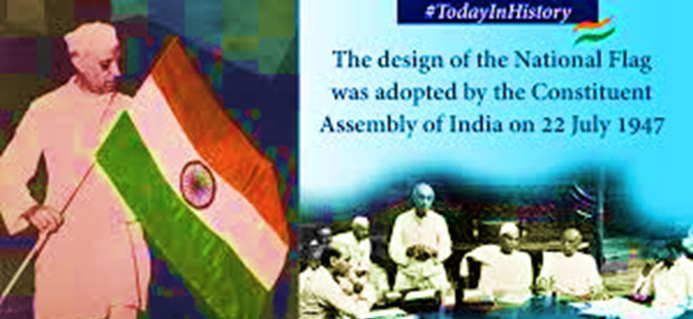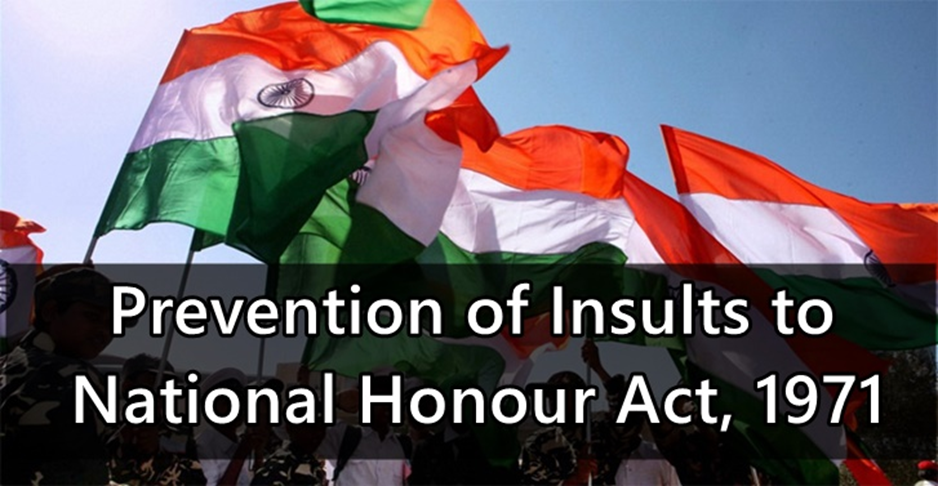On this day 22 july in 1947, the Constituent Assembly of India adopted the National Flag. It was a red-letter day in our history, and the tricolour’s adoption marked a pivotal moment in India’s journey towards establishing itself as an independent nation free from colonial rule.
National Flag Day 2024
Why In News
- On this day 22 july in 1947, the Constituent Assembly of India adopted the National Flag. It was a red-letter day in our history, and the tricolour’s adoption marked a pivotal moment in India’s journey towards establishing itself as an independent nation free from colonial rule.
Constituent Assembly on July 22, 1947
- Constituent Assembly met in the Constituent Hall in New Delhi at 10 o’clock, with Dr Rajendra Prasad in the Chair. The Constituent Assembly had been meeting since December 9, 1946, and had by then discussed a range of subjects.
- The Chair announced that the first item on the agenda was “a Motion by Pandit Jawaharlal Nehru about the Flag”.
- Thereafter, India’s first Prime Minister rose to move the following Resolution: “Resolved that the National Flag of India shall be horizontal tricolour of deep Saffron (Kesari), white and dark green in equal proportion. In the centre of the white band, there shall be a Wheel in navy blue to represent the Charkha. The design of the Wheel shall be that of the Wheel (Chakra) which appears on the abacus of the Sarnath Lion Capital of Asoka.
- “The diameter of the Wheel shall approximate to the width of the white band.
- “The ratio of the width to the length of the Flag shall ordinarily be 2:3.”
- At the end of the day, the record says, “The motion was adopted, the whole Assembly standing.”
Evolution Of National Flag
- 1906: Arguably the first national flag of India is said to have been hoisted on 7th August 1906, in Kolkata at the Parsee Bagan Square (Green Park).
- It comprised three horizontal strips of red, yellow and green, with Vande Mataram written in the middle. The red strip on the flag had symbols of the sun and a crescent moon, and the green strip had eight half-open lotuses.
- 1907: Madame Cama and her group of exiled revolutionaries hoisted an Indian flag in Germany in 1907 — this was the first Indian flag to be hoisted in a foreign land.
- 1917: Dr Annie Besant and Lokmanya Tilak adopted a new flag as part of the Home Rule Movement. It had five alternate red and four green horizontal stripes, and seven stars in the saptarishi configuration. A white crescent and star occupied one top corner, and the other had Union Jack.
- 1931: The Congress Committee met in Karachi and adopted the tricolour (that of Pingali Venkayya) as India’s national flag. Red was replaced with saffron and the order of the colours was changed. The flag was to have no religious interpretation.
- Saffron on top symbolises “strength and courage”, white in the middle represents “peace and truth” and green at the bottom stands for “fertility, growth and auspiciousness of the land”.
- The Ashok Chakra with 24 spokes replaced the spinning wheel as the emblem on the flag. It is intended “to show that there is life in movement and death in stagnation”.
Rules & Acts Governing Display Of National Flag
- The earliest rules for the display of the national flag were originally governed by the provisions of The Emblems and Names (Prevention of Improper Use) Act, 1950 and The Prevention of Insults to National Honour Act, 1971.
- It mentions that the tricolour cannot be used for commercial purposes, and cannot be dipped in salute to any person or thing.
- The flag should not be used as a festoon, or for any kind of decoration purposes.
- Any paper flags, which are used on occasions of national and cultural occasions or sporting events, should not be casually discarded and must be disposed of in private.
- For official display, only flags that conform to the specifications as laid down by the Bureau of Indian Standards and bearing their mark can be used.
- The Prevention of Insults to National Honour Act, 1971 prohibits the desecration of or insult to the country’s national symbols, including the national flag, the Constitution, the national anthem and the Indian map.
- Section 2 of the Act says, “Whoever in any public place or in any other place within public view burns, mutilates, defaces, defiles, disfigures, destroys, tramples upon into contempt the Indian National Flag or the Constitution of India or any part thereof, shall be punished with imprisonment for a term which may extend to three years, or with fine, or with both.
Flag Code of 2002:
- In 2002, the Flag Code of India came into effect which allowed the unrestricted display of the Tricolour as long as the honour and dignity of the flag were being respected.
- The flag code did not replace the pre-existing rules governing the correct display of the flag; it was, however, an effort to bring together all the previous laws, conventions and practices.
- The Flag Code of 2002 is divided into three parts:
- A general description of the tricolour.
- Rules on the display of the flag by public and private bodies and educational institutions.
- Rules for the display of the flag by governments and government bodies.
- A recent revision to the flag code has stated that the National Flag shall be made of hand spun and hand woven or machine made, cotton, polyester, wool, silk khadi bunting.



























